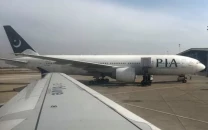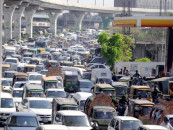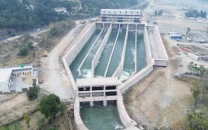China and the Asian turmoil
China is linking itself with the countries to its west by building a network of roads, railways, fibre-optic cables..

The writer is a former caretaker finance minister and served as vice-president at the World Bank
Such a slowdown is not happening without delivering shocks to the entire Chinese economy. The world — and that includes the authorities in Beijing — has recognised that the old model of economic development that had resulted in increasing the size of the Chinese economy 35-fold between 1980 and 2010 will no longer work. Once called the East Asian miracle by the World Bank, this model had a number of components. Four of these were of particular importance.
The all-powerful state provided direction to entrepreneurs, both private as well as those operating in the large public sector. The entrepreneurs used low-wage labour to produce low-priced goods in quantities far in excess of domestic demand. The state worked with the involved entrepreneurs to find external markets for the surpluses produced by their enterprises. The result of this approach was a large trade surplus that created enormous foreign exchange reserves for Beijing. Given the very high rate of domestic savings, the state did not need the accumulated foreign exchange reserves for development. They were saved. At one point, China had $4 trillion in foreign exchange reserves. Most of these were parked in the United States, a significant amount in the form of US Treasury Bills.
This model would have continued to produce results had the Western economies not been hit by what has been called the Great Recession of 2008-09. This resulted in a sharp downturn in the rate of economic growth in the West. The market contraction that resulted saw a major decline in Asian exports. Unlike a number of recessions following the end of the Second World War, the one in 2008-09 was not V-shaped, a sharp contraction followed by a sharp expansion. Instead, it is most likely to be U-shaped, a contraction followed by a long period of low growth and then recovery. Some analysts fear that this may turn out to be a W-shaped recession, two downturns before a modest recovery settles in.
The Great Recession came at the time when demographic developments had begun to take a heavy toll on the economies of the West. The rapid ageing of populations in most of Europe and in Japan was changing the age-profile of populations in significant ways. Germany, with a median age of 47 years, was the world’s oldest population. This may be one reason for Berlin spreading the welcome mat for the million young refugees that arrived in 2016 from Syria and Afghanistan seeking asylum and work. This ageing was the result of sharp declines in human fertility in these countries accompanied by major advances in health sciences that prolonged life. Each year added to life expectancy increases the demand for services such as health care and welfare for the aged and the ageing. Already, services account for 86 per cent of America’s Gross Domestic Product. The markets in rich societies, therefore, cannot accommodate increasing amounts of cheap manufactures from large Asian economies.
China and other large Asian economies will have to find other determinants of economic growth. China is attempting to do this in three different ways: by increasing domestic demand for domestically produced goods, by encouraging the flow of non-manufacturing wages into family incomes, and by diverting its large construction industry to invest in building infrastructure outside its borders. For instance, by announcing that it will link itself with the countries to its west by building a network of roads, railways, fibre-optic cables and oil and gas pipelines, Beijing is inaugurating a new era of land-based connectivity. This will have two consequences. It will bring the land-locked nations of Central and West Asia into China’s economic orbit. It will also revive the large Chinese construction industry. Beijing expects to invest as much as $400 billion in two dozen countries in building this infrastructure in the next five to 10 years. To help it achieve this goal, it has spearheaded the establishment of new multilateral development institutions. As its name suggests, the China-dominated Asian Infrastructure Investment Bank will focus on building the new communications and transport networks. These are massive changes that will alter the fundamentals of the Chinese economy. In turn, they will have enormous consequences for the global economy.
Published in The Express Tribune, January 18th, 2016.
Like Opinion & Editorial on Facebook, follow @ETOpEd on Twitter to receive all updates on all our daily pieces.













COMMENTS
Comments are moderated and generally will be posted if they are on-topic and not abusive.
For more information, please see our Comments FAQ